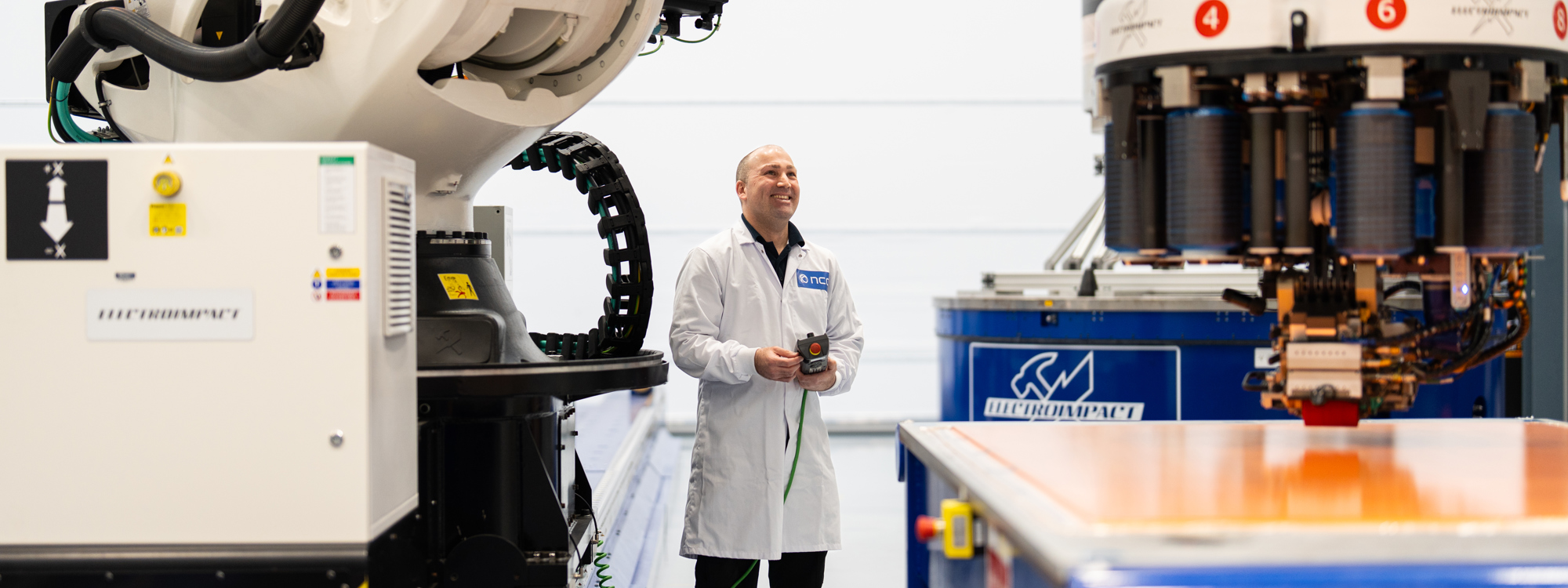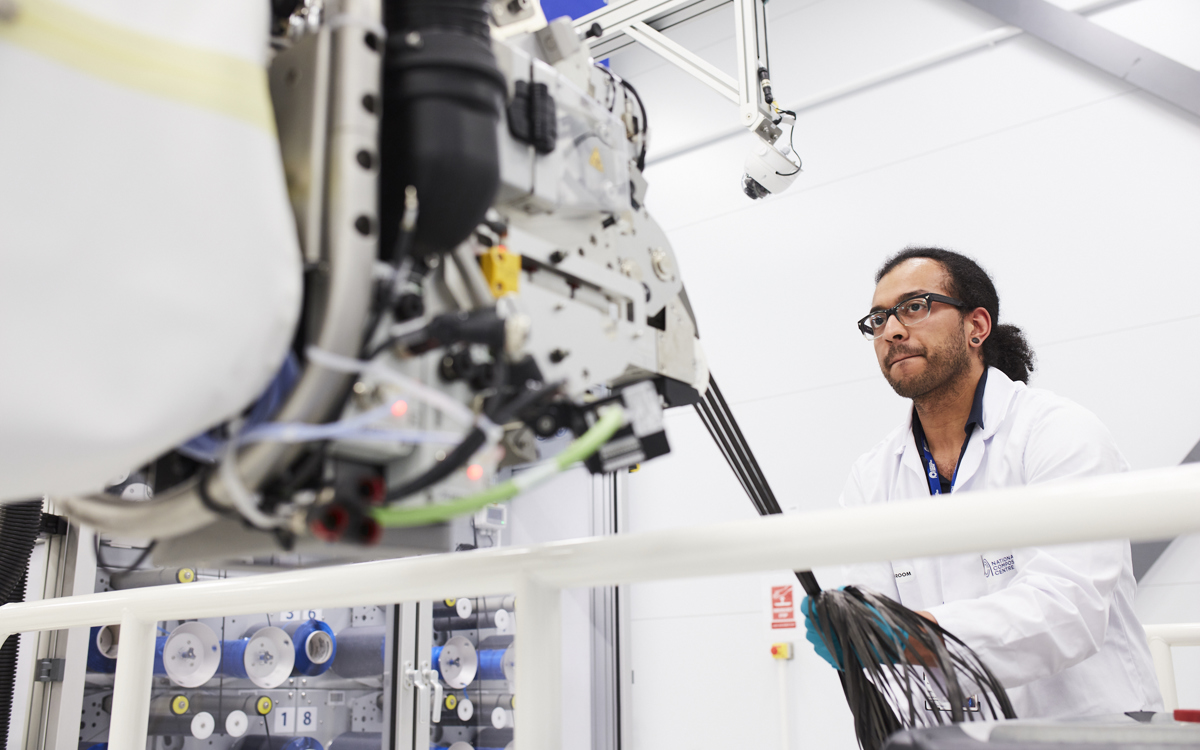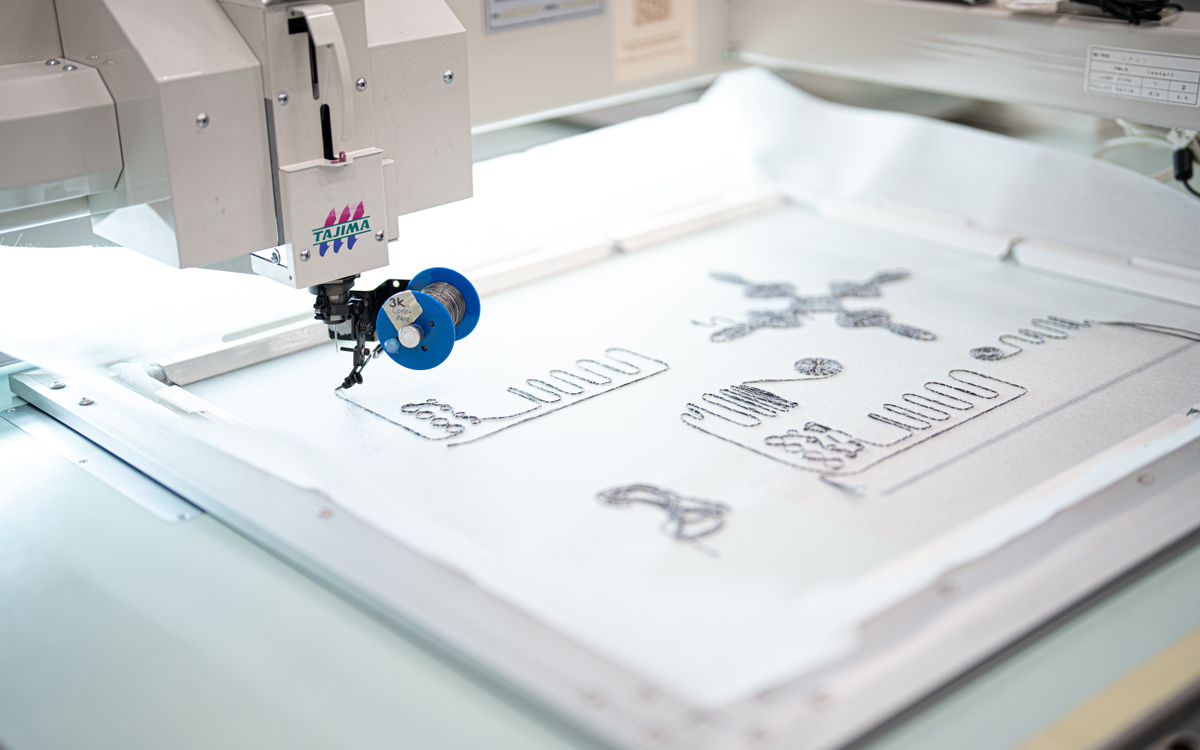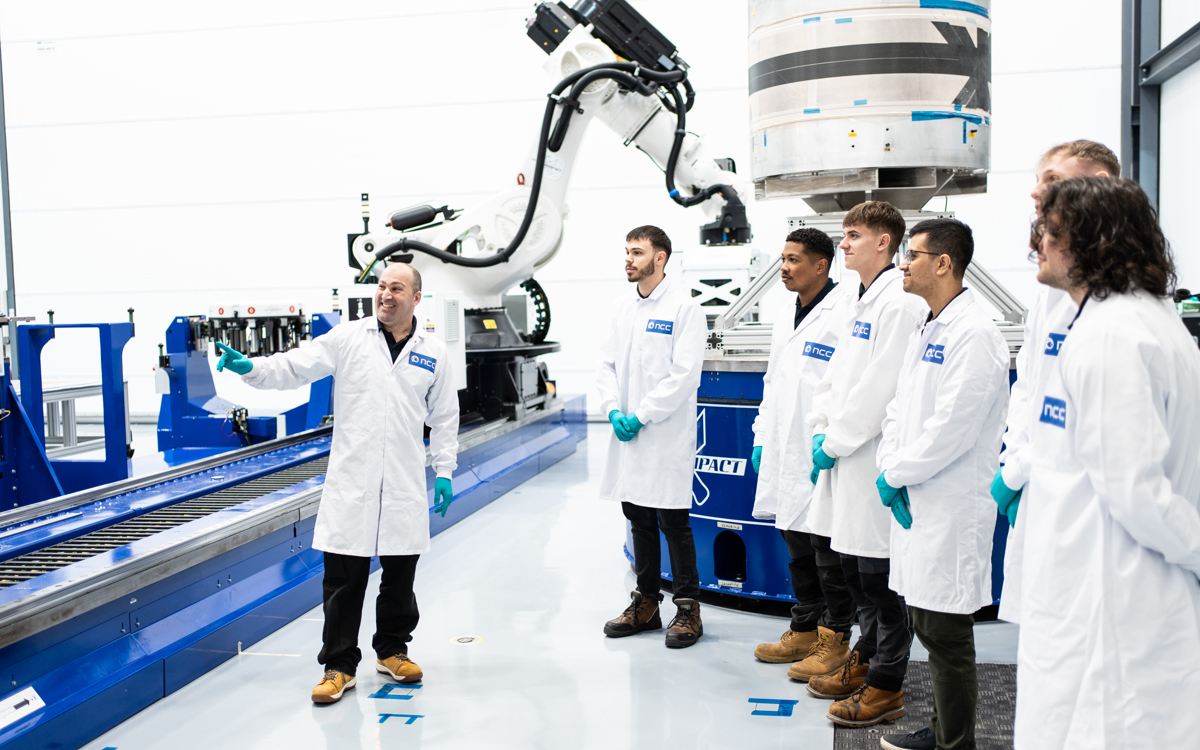
Our latest AFP-ATL developed with Electroimpact
Our latest cell has been created in partnership with Electroimpact (Flintshire, UK) is a uniquely designed capability that combines both AFP and ATL in a single system. The dual system can be used individually or together to collaborate and create large, complex structures with minimal downtime. The robot is intended for medium to large scale manufacturing with high performance and accuracy robotic motion platform.
The Automated Fibre Placement (AFP) process head utilises x 8 tows, each measuring 12.7mm wide, with either an infrared heater to manufacture thermoset composites, or the novel Humm3 flash lamp heater by Heraeus Noblelight (Cambridge, UK) to manufacture thermosets at low temperatures (30-60 degree) and high temperature thermoplastics or bindered dry fibre (100-300 degree).


NCC is the best equipped research centre for Automated Fibre Placement (AFP) in the world. AFP is a unique process where individual tapes, called tows, are pulled off spools and fed through a delivery system into a fibre placement head. These bands of tows, called a course, follows programmed fibre paths and is placed directly on to a tool or work surface to create a preform. The individual layers of the preforms are consolidated on the fly, whilst a number of heating systems (infra-red, laser, flash lamps) are used to tack one layer to the other. More recently, dry fibre tows are also used on AFP machines to create a preform for out-of-autoclave processes.


Tailored Fibre Placement is where a tow of fibres is continuously sewn to a base material. The benefits include; affordable - agile - net-shape 2D preforming, highly specific fibre position and orientation for tailored blanks, enables net-shape preforms for reduced material cost, cheaper raw materials for reduce process steps, automated manufacture for increased repeatability.




